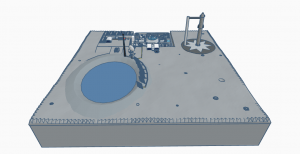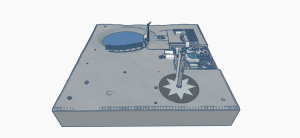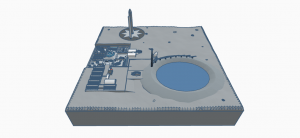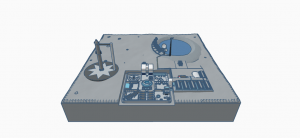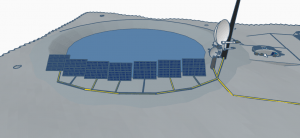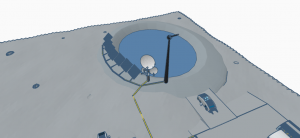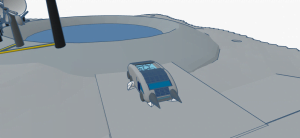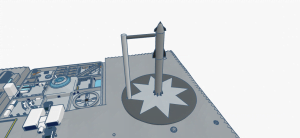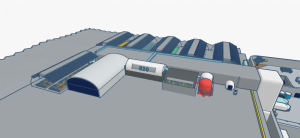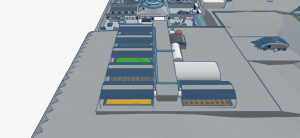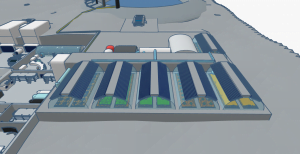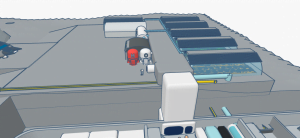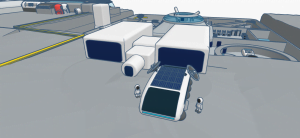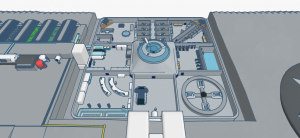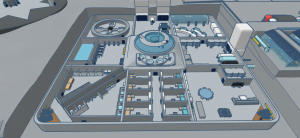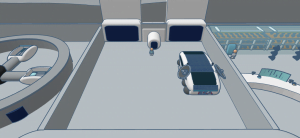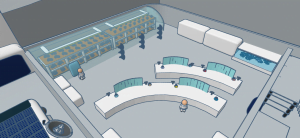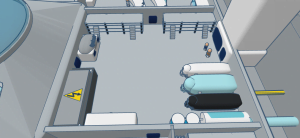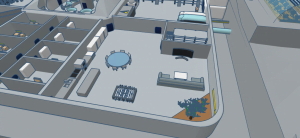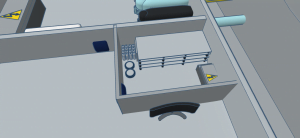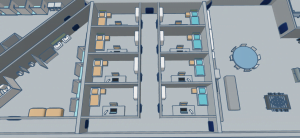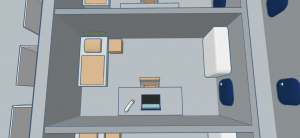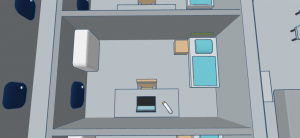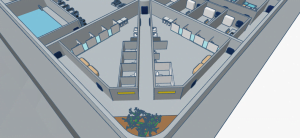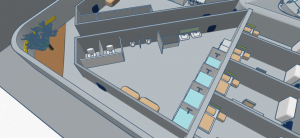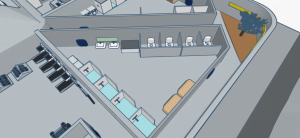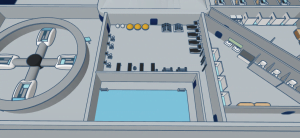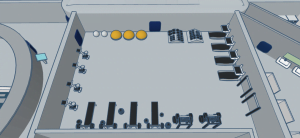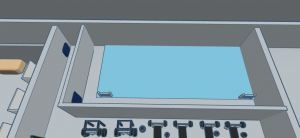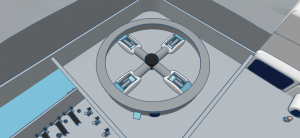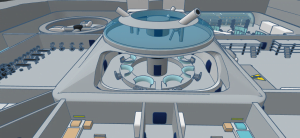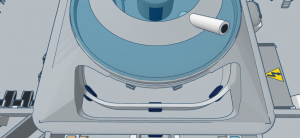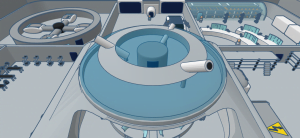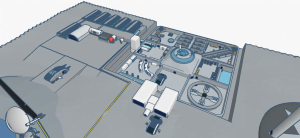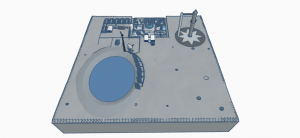Moon Camp Explorers Gallery 2020-2021
In Moon Camp Explorers each team’s mission is to 3D design a complete Moon Camp using Tinkercad. They also have to explain how they will use local resources, protect astronauts from the dangerous of space and describe the living and working facilities.
Team: BRNO DRAGONS
Biskupské gymnázium Brno a mateřská škola Brno Czech Republic 14 Second Place – ESA Member states
External link for 3d
|
Project description
Our base is named after Czech biologist and scientist Gregor Johann Mendel. He is founder of genetics and discoverer of the fundamental laws of inheritance.
At the base, we will focus on the development of genetically modified plants and moreover the study of influence of the lunar environment on plants that will grow there – honouring Gregor Mendel. We will also study the effects of lunar environment on humans and discover new stars and galaxies – this will be realized in our astronomical observatory. Telescopes will be placed there, and with barely no light that could make the observation poor, many new cosmic bodies are sure to appear.
The base will be occupied by 8 astronauts for 6 months. The crew will always consist of 2 rocket engineers (mechanics and pilots), 2 geologists, 2 biologists (chemists and doctors), 1 IT specialist and 1 astronomer After 6 months they will be replaced by another ones.
The whole base consists of several parts: solar panels, radars and a laser on the top of a crater
The residential building contains the following parts: Control Centre – for communication with the Earth |
|||
|
Where do you want to build your Moon Camp?
Shackleton crater Why did you choose this location?
We chose Shackleton Crater because it lies very closely to the South Lunar Pole, so there are not as extreme temperatures as anywhere else on the Moon. There is also a large amount of ice in the crater which we will melt and extract after mining. At the top of the crater, we plan to build solar panels that would be almost constantly exposed to sunlight. That would ensure an almost ceaseless energy intake. Next to the solar panels there will be a radar which, thanks to its high position, would have an excellent signal to communicate with the Earth. How do you plan to build your Moon Camp? Which materials would you use?
The construction of the base will be printed by a huge 3D printer brought from Earth. The material to be printed will be 90% regolith and 10% earth binders. The construction of the base is filled with inflatable rooms that are reinforced with titanium. Other things (technical devices, solar panels, rovers, …) will of course be brought from Earth. Most of the residential base will be below the surface, except for the observatory, which will be the only room in the dwelling above the surface. Next to the base will be six greenhouses – materials will be described in section called protection. Explain how your Moon Camp will provide the astronauts with:
|
|||
|
Water
|
Food
|
Electricity
|
Air
|
|
Water (ice) is extracted by our automatic lunar excavator which is appropriately adapted with its heating drills. After extraction, it picks up pieces of ice in its rear tank, transports them to a tank at the base where the ice melts. Here the water will also be chemically treated and purified. Part of the water is drained into greenhouses for watering, most of it flows into the station for needs of astronauts and the last part of the water flows into the secondary tank where it is divided into hydrogen and oxygen by electrolysis. |
The main sources of food are greenhouses in which lunar soil (regolith) will be mixed with organic waste. There are 6 greenhouses in total; of which 3 provide primarily food for astronauts; in the next one, there will be foods that grow longer but will occasionally diversify the diet; and in the two others, genetically modified plants will be grown, researched, and developed. The main component of the diet will be algae which grow very fast and produce a lot of oxygen. Sometimes we add fish to the diet which will be kept in a laboratory aquarium. |
The entire base will run thanks to solar energy. Most of the energy will be provided by rotating solar panels which will be located at the top of the crater and will almost always be exposed to sunlight. A smaller part of the energy will be obtained from solar blinds which will cover the greenhouses during excessive solar activity (during lunar days), so that the plants inside will not dry out and burn out. Our rovers and excavators will also be powered by electricity which they will charge with solar panels on their roofs on longer journeys. |
A large part of the air is provided mainly by algae, as well as other plants. We will also capture oxygen when recycling wastewater. Additional oxygen is obtained from the extracted water by electrolysis. From dying plants and organic waste, we will capture nitrogen which forms the largest part of the breathable air. After obtaining these two main components of air (oxygen and nitrogen) we will mix and thus ensure breathable air. The carbon dioxide that astronauts will exhale will be captured and taken to the greenhouses of plants that need it. e) Protection |
|
Describe a day on the Moon for one of your Moon Camp astronauts
Our Base will follow World Time (UTC). This is what a day on the Moon will look like: In the morning, the astronauts will get up at 6 AM. There will be time until 6:20 AM for morning hygiene. Breakfast will take place until seven o’clock. From 7 AM to 11 AM, astronauts will work. During the meeting, they agree on whether some crew members will go out for samples, for example, or if no one will be out that day, and will only work at the base. From 11 o’clock, the crew will practice for an hour and at midday there will be lunch. This will last until about 1 PM. There will be an hour break after lunch. From 2 PM to 6 PM, the crew will work again. After work, there is again an hour of exercise at the gym until 7 PM. This is followed by dinner, which takes about half an hour. By 8:15 PM, astronauts will have leisure time. It is followed by communication with the Earth. That ends at 9:45 PM. There will be evening hygiene until 10 PM. Then the astronauts go to bed and the next day they get up again at 6 AM. Every Saturday, all areas will be cleaned and the equipment will be inspected throughout the day. On Sundays, astronauts have a day off. |
|||


